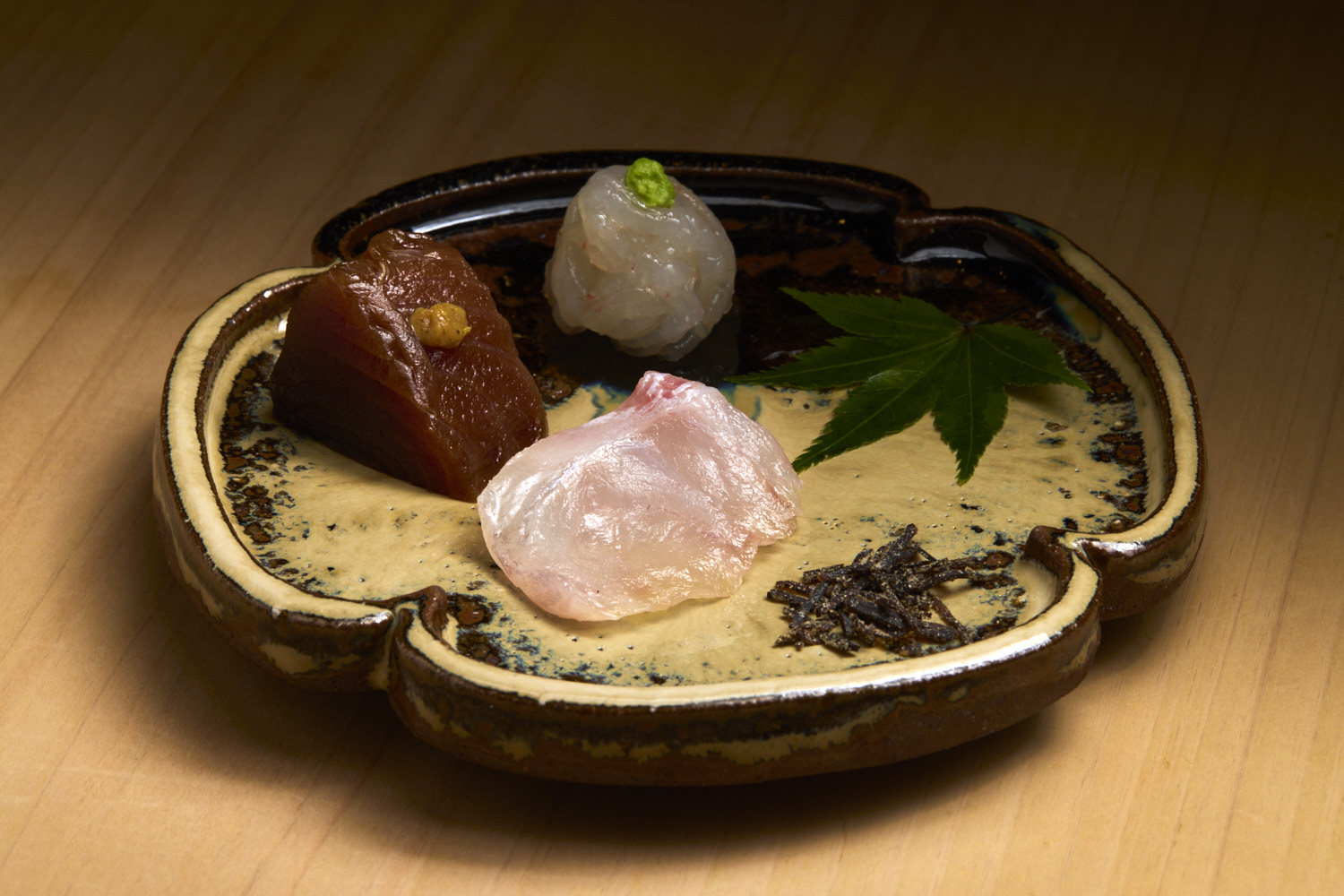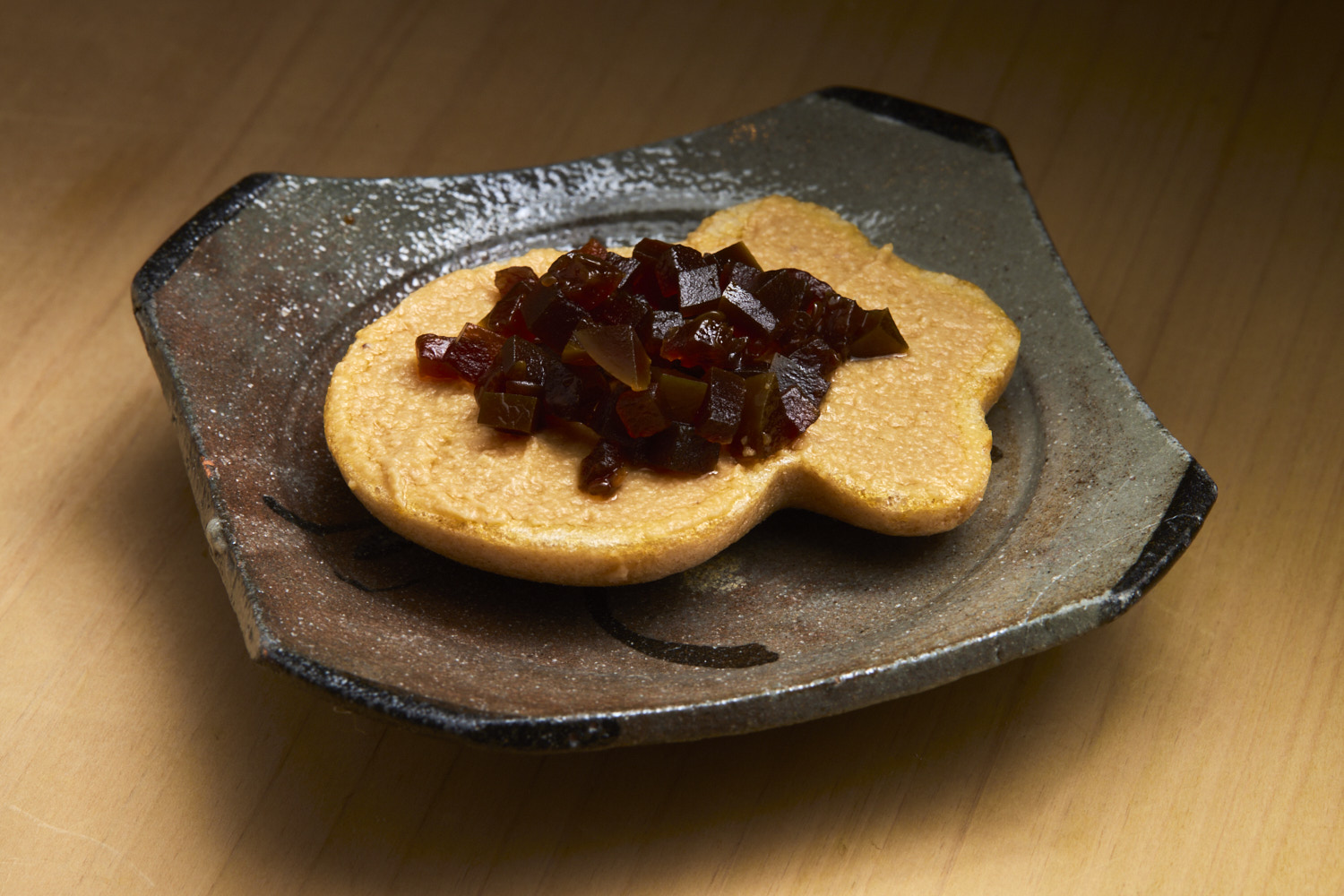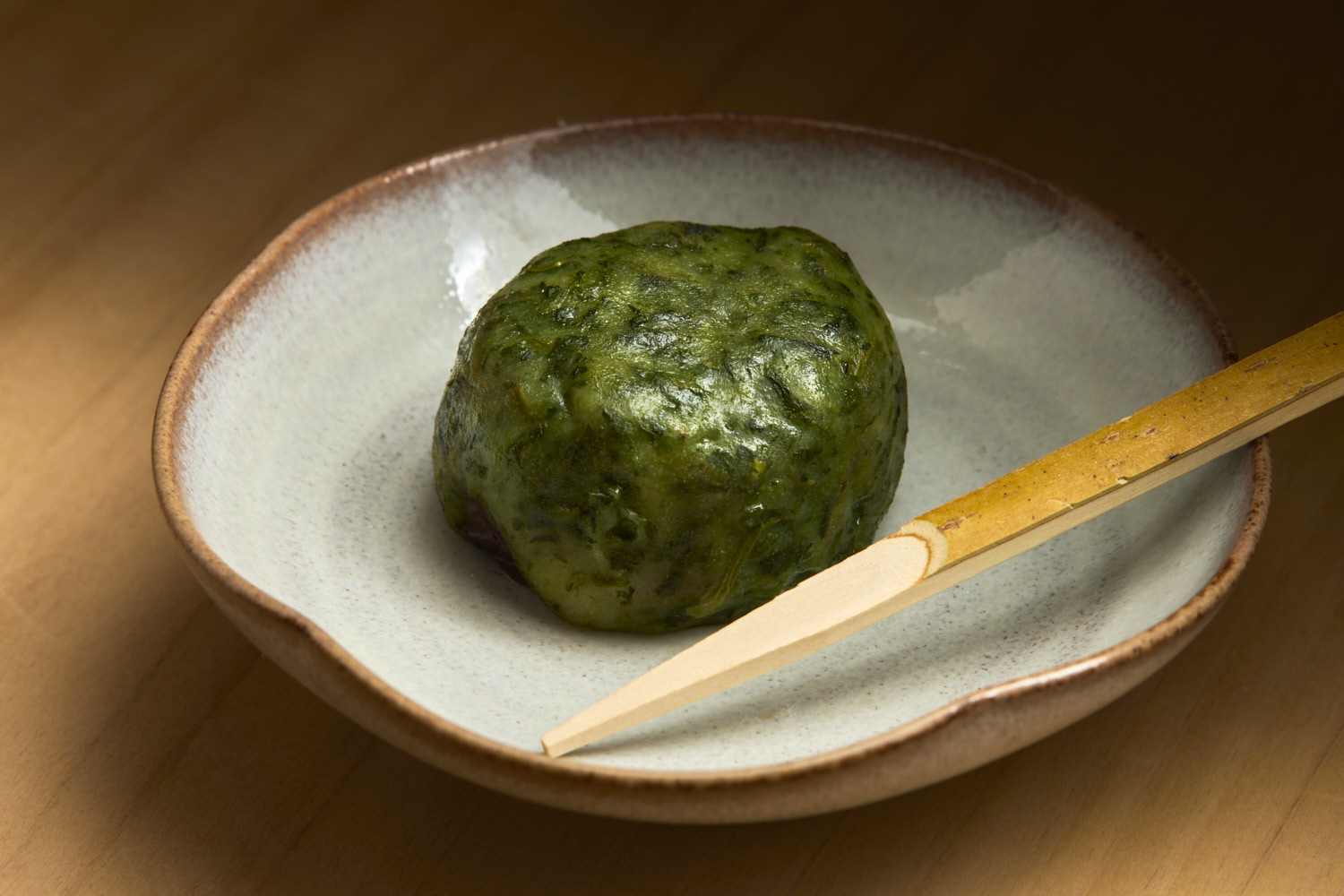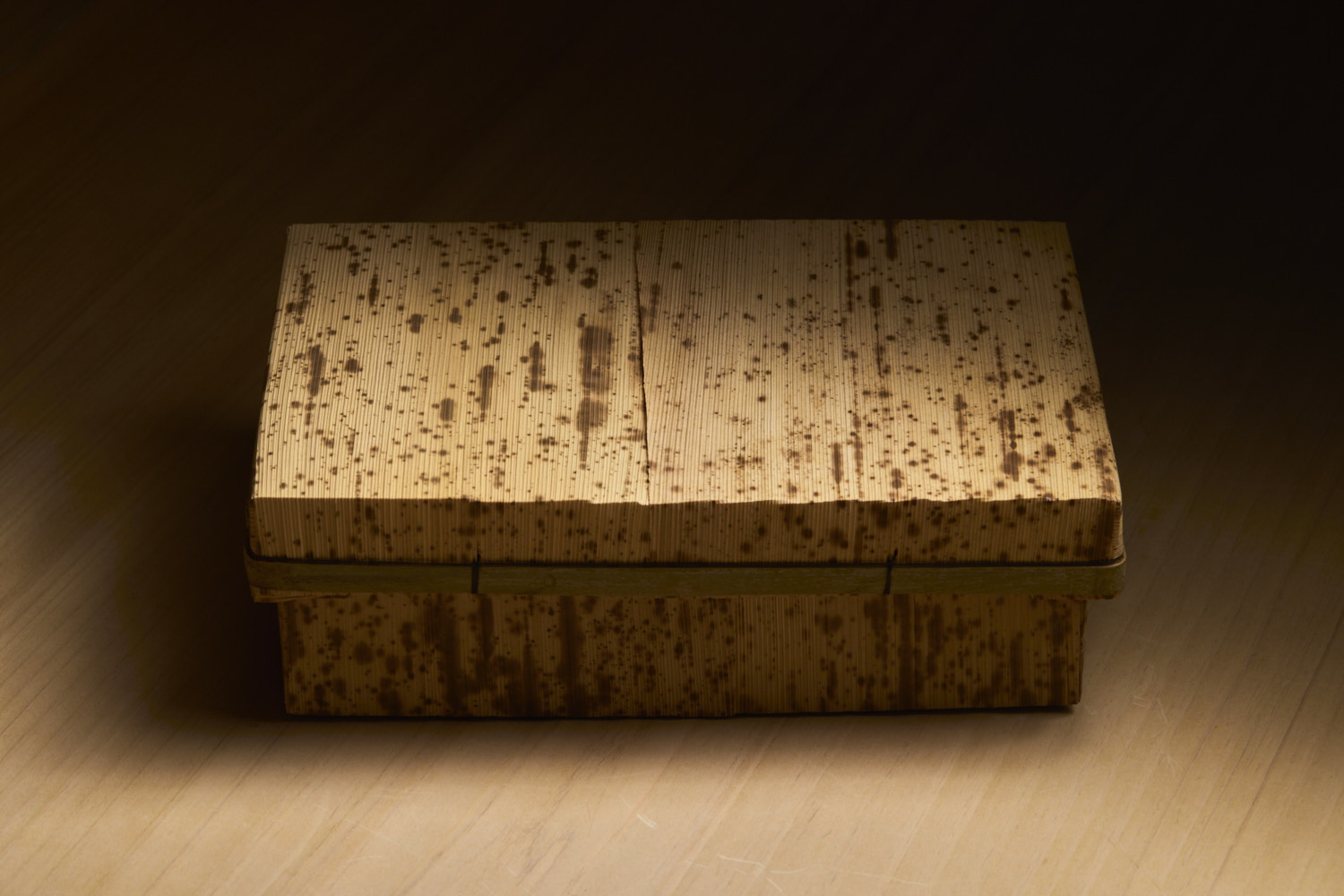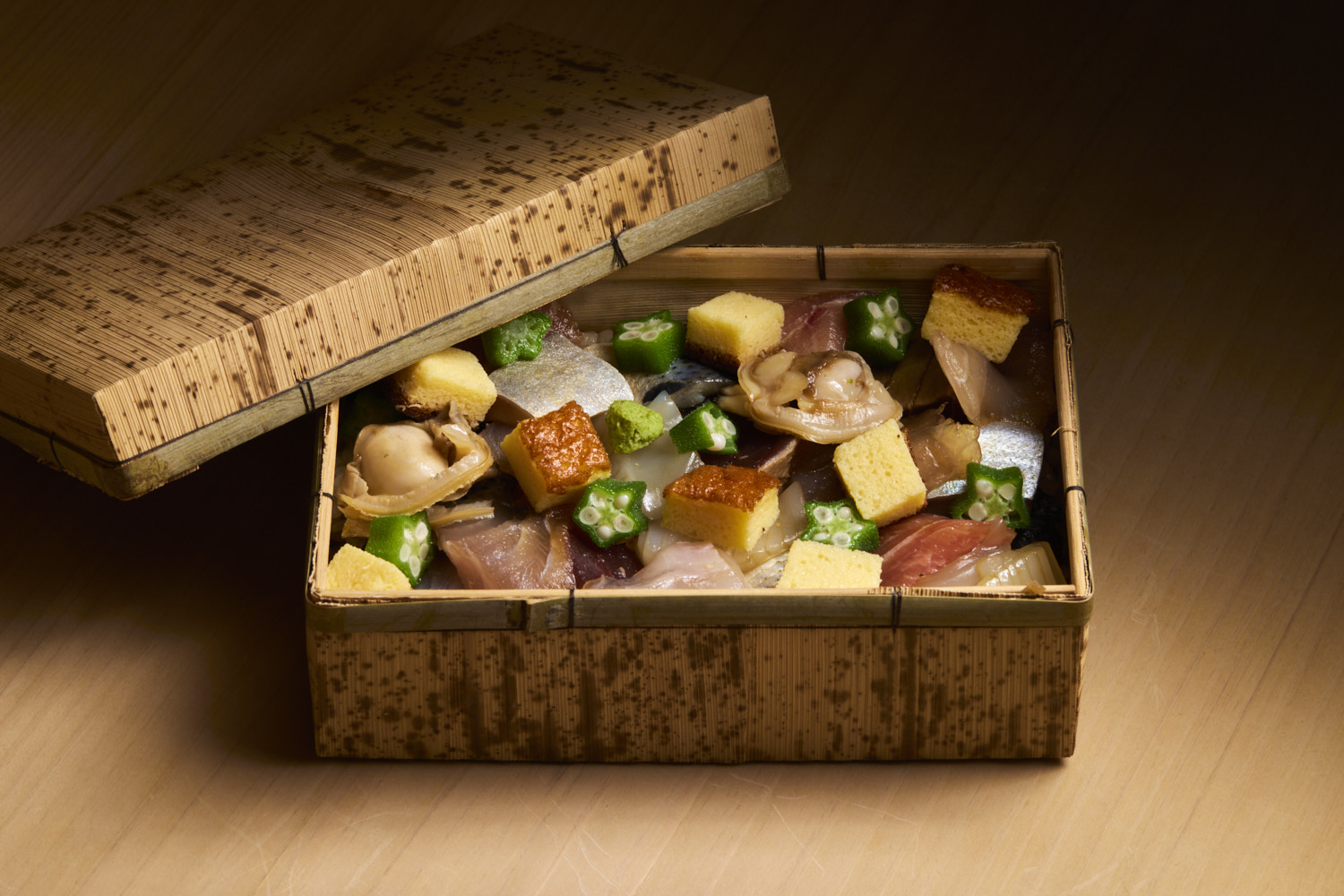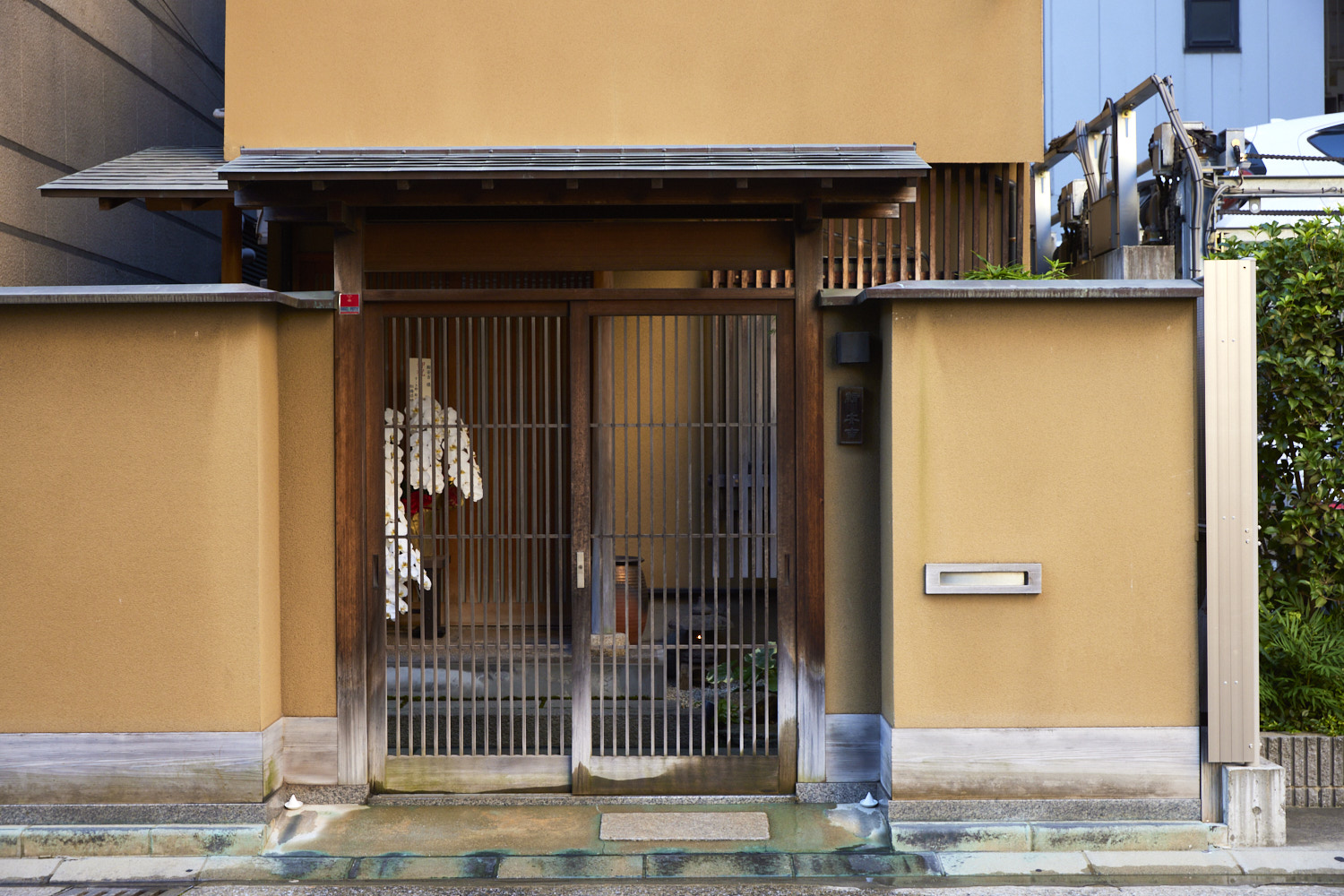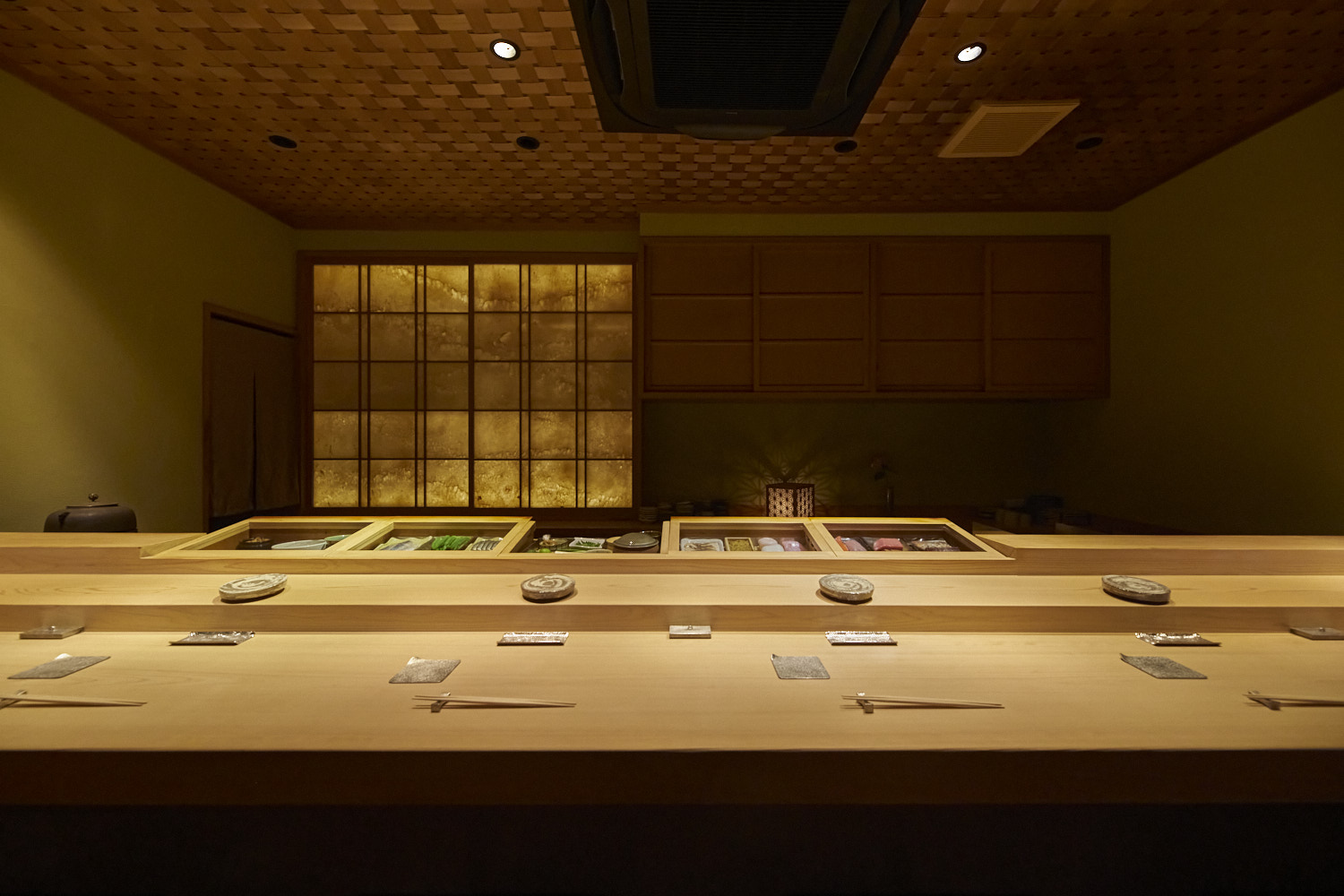
Fukuoka
Sushi Yasukichi
鮨 安吉
Yasuhiko Shiiya stood behind a sushi counter for the first time on the night of his junior high graduation, a decision that would lead him to an impressive career and the opening of Sushi Yasukichi at just 26 years old. Here, one encounters sushi unique to Fukuoka—its exquisite menu blends traditional technique with a deep sense of place, showcasing the region’s treasured seafood such as mackerel and red sea urchin. Esteemed by gourmets including Keiji Nakazawa of Sushi Sho, it has become a destination for sushi rooted in craft and locality.
The restaurant, which occupies a standalone house, is conveniently located near Hakata Station and the Yanagibashi Rengo Market where the chef sources most of his fresh ingredients. Since its opening in 2001, the property has undergone two thoughtful renovations, which have softened the interior into a space with quiet character.
The dining room embodies traditional Japanese aesthetics. A wickerwork ceiling creates a warm ambiance over the six spacious counter seats. The counter itself, crafted from Yoshino cedar, is perfectly flat, offering guests a clear view of Shiiya’s practiced hands and the precisely arranged ingredients. The exquisite tableware includes local Takatori ware alongside pieces from contemporary Karatsu and Arita artisans.
The sake list offers about ten selections, featuring both Kyushu labels and renowned national vintages. Among them is Tanaka Rokugo, brewed by Shiraito Sake Brewery in nearby Itoshima City. Shiiya himself travels there twice a month to collect the water used in the brewing. The water is served as a chaser with this delicious sake, which is unavailable on the open market.
The restaurant’s name comes from Shiiya’s early years of training, when mentors found his name, Yasuhiko, cumbersome and called him “Yasukichi.” He chose to keep this nickname as a reminder of his original aspirations.
CUISINE
Enjoy fresh Kyushu seafood
The chef’s omakase focuses on fresh Kyushu seafood, each course prepared with refined technique and style. The seasonal menu offers about twelve to thirteen small appetizers, followed by ten to eleven pieces of nigiri, dried gourd, egg, miso soup and dessert. The sushi rice is firm yet not weighty, leaving a refreshing finish that belies the number of courses.
During the new tea season, the meal begins with a cup of gyokuro, regarded as Japan’s finest, sourced from Hoshinomura in Yame City. Brewed to body temperature, it warms the stomach and sets the tone.
The signature mackerel roll is deliberately understated, served rare for a tender texture, and paired with soft, delicate rice. Each piece arrives directly to the guest at the counter, prepared moments before. “Fukuoka is Japan’s number one city for mackerel consumption,” Shiiya notes. “We serve it at its best, in autumn and winter when the fish is at its fattiest and most flavorful.”
Monkfish liver, a sushi house classic, arrives encased in a light monaka wafer, adorned with seasonal designs such as goldfish and plum that evoke the local culture of Fukuoka. The liver is prepared in the style of a pâté and topped with a piece of pickled watermelon. The assortment of sashimi includes white shrimp cured with kombu, pickled bonito, tilefish similarly marinated and a delicate garnish of salted kombu.
Traditional techniques are treated with respect here, with care taken to preserve older methods rarely seen today. While many restaurants now marinate tuna in slices to shorten time, Shiiya still prepares it in blocks, letting it sit in a seasoned marinade for three to four hours. The tuna is first yushimo-treated—blanched in hot water—giving the surface a subtle change in color. The day’s tuna nigiri comes from a 108-kilogram Yamagata catch, line-caught and marinated slowly in nikiri after blanching.
A vivid piece of sea urchin nigiri follows, using red sea urchin from Fukuoka Prefecture, formed as nigiri rather than gunkan, and topped generously to allow the natural flavor to shine. The day’s dessert continues the theme of fresh tea with gyokuro mochi, made from tea steeped at about 80 degrees and incorporating the delicate leaves themselves.
INGREDIENTS
Each morning, Shiiya visits the local Yanagibashi Rengo Market—known as the kitchen of Hakata and situated just a kilometer from the restaurant. Among the exceptional seafood of Kyushu, the ingredient he speaks of with particular pride is the red sea urchin. “Compared to others, it’s like bitter chocolate—deep and rich,” he says.
Local fish are favored whenever possible, though he does bring in select tuna and shellfish from farther afield. In recent years, he has relied on tuna from Yamayuki, a renowned tuna vendor at the Toyosu Market—a preference for smaller, approximately 100-kilogram fish, caught in fixed nets off Noto, prized for their moist texture.
The rice is a careful blend of two Kyushu varieties, seasoned with a mixture of three vinegars, including red vinegar from Yokoi Brewery. The kelp, or ma-kombu, is sourced from Hokkaido, while the nori seaweed comes from Ariake, reflecting the attention given to even the most subtle components of the sushi.
During the new tea season, he also acquires what he considers Japan’s finest gyokuro, produced in Hoshinomura in Yame City, and pairs it with other top-quality ingredients beyond seafood.
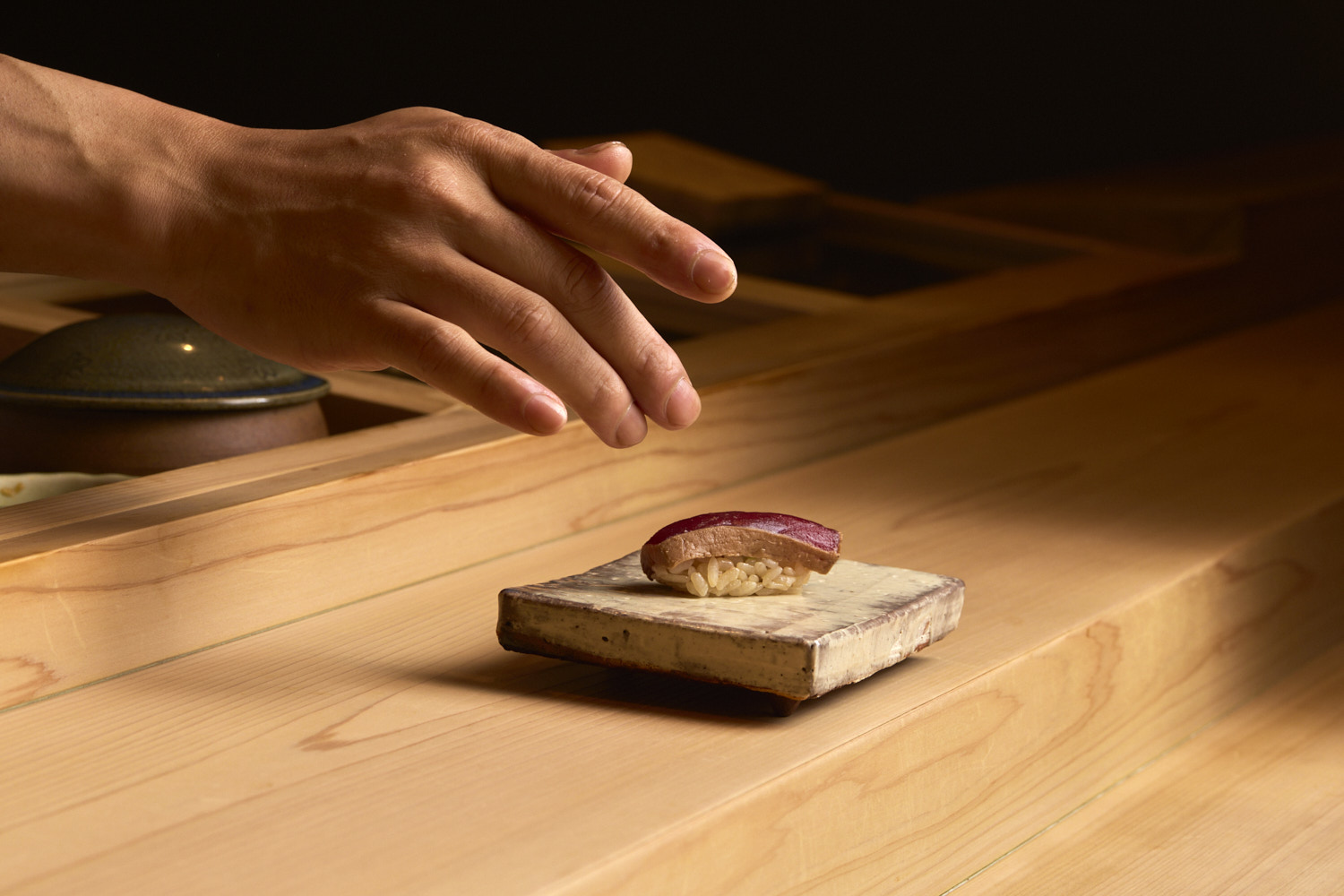

CHEF
Yasuhiko Shiiya
BARA CHIRASHI
For guests who wish to take a piece of the experience home, Shiiya prepares bara chirashi to order. The contents change with the seasons and according to price, but may include an artful assortment of small fish, shrimp, white fish, tuna, clams, conger eel, egg, okra, and, when available, salmon roe and sea urchin. Packed in an elegant bamboo-skin box, the takeaway dish is as pleasing to the eye as it is to the palate.
Course
- The price includes our booking fee of ¥8,000
- The price includes our booking fee of ¥8,000


